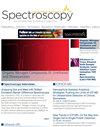利用拉曼显微镜鉴定聚合物容器中可萃取物和可浸物的探索
IF 1.5
4区 化学
Q4 SPECTROSCOPY
引用次数: 0
摘要
在我2020年2月专栏的后续文章中,我开始对可提取物和可浸出物进行更系统的研究。根据FDA的Mark Witkowski的建议,我研究了三组暴露在以下液体中的离心瓶,以评估拉曼显微镜在特定条件下识别聚合物中存在的化合物的潜力:盐水,磷酸盐缓冲液,水,100℃的盐水处理,100℃的磷酸盐缓冲液处理,100℃的水处理,乙醇,氯仿,pH 5和pH 9。虽然所有的容器都是由聚丙烯(PP)制成的,但它们的行为却不一样。从不同厂家的PP瓶中提取的化合物并不总是相同的。虽然记录的光谱类型数量很多,但本文主要关注一些有趣的解释。目的是弄清楚什么时候使用拉曼显微镜进行这种鉴定是有意义的。考虑的特征是样品制备的便利性,可用于分析的材料的最小数量,以及鉴定的质量。本文章由计算机程序翻译,如有差异,请以英文原文为准。
Exploration of the Use of Raman Microscopy to the Identification of Extractables and Leachables from Polymeric Containers
In a follow-up to my February 2020 column, I started a more systematic study of extractables and leachables. Following a suggestion from Mark Witkowski of the FDA, I looked at three sets of centrifuge vials that were exposed to the following liquids in an effort to evaluate the potential of Raman microscopy to identify compounds exiting in polymers under particular conditions: saline, phosphate buffer, water, saline treatment at 100 0C, phosphate buffer treatment at 100 0C, water treatment at 100 0C, ethanol, chloroform, pH 5, and pH 9. Although all containers were made of polypropylene (PP), they didn’t behave similarly. Compounds that were extracted from PP vials from different manufacturers were not always the same. Although the number of spectral types that are recorded is large, this article focuses on a few whose interpretation is interesting. The goal was to figure out when it makes sense to employ Raman microscopy for such identification. The characteristics considered were ease of sample preparation, the minimum quantity of material amenable to analysis, and the quality of the identification.
求助全文
通过发布文献求助,成功后即可免费获取论文全文。
去求助
来源期刊

Spectroscopy
物理-光谱学
CiteScore
1.10
自引率
0.00%
发文量
0
审稿时长
3 months
期刊介绍:
Spectroscopy welcomes manuscripts that describe techniques and applications of all forms of spectroscopy and that are of immediate interest to users in industry, academia, and government.
 求助内容:
求助内容: 应助结果提醒方式:
应助结果提醒方式:


